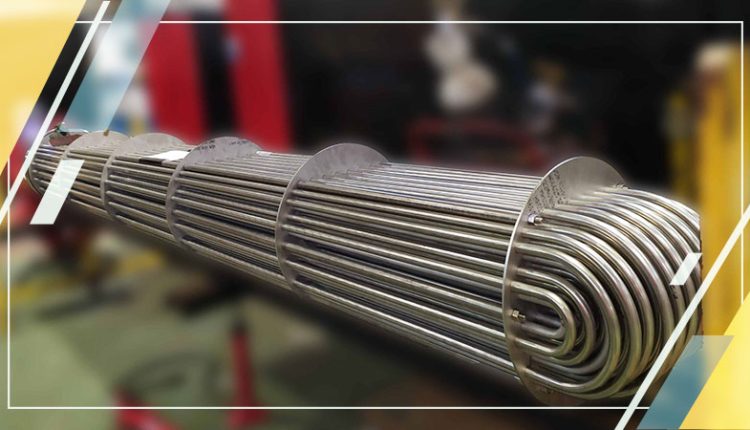Ever wondered how your car stays cool in scorching summer heat or how your home remains warm during chilly winter nights? The answer lies in a vital component of countless heating, cooling, and refrigeration systems: the heat exchanger. But what exactly it is, and how does it work? Let’s explore more about it
What is a Heat Exchanger?
A heat exchanger is a device designed to facilitate the rapid and effective transfer of heat between multiple fluids by employing a solid barrier to prevent direct mixing or contact. It operates by utilizing a fluid medium to convey heat without direct exchange of the heat-carrying fluid, which may be in the form of gas or liquid. Heat naturally moves from higher to lower temperatures, necessitating a temperature gradient for heat transfer. Apart from that, these exchangers play a significant role in enhancing the performance of various machines and engines.
Different types of these exchangers including shell and tube, plate, and finned tube variants, are available to cater to distinct usage scenarios and operational environments. These devices are instrumental in a wide array of systems, encompassing internal combustion engines, electronic gadgets, heating appliances, and industrial furnaces, as they enable the efficient exchange of thermal energy between different mediums.
How Does a Heat Exchanger Work?
Heat exchangers operate on the fundamental principle of heat transfer, where heat moves from a hotter medium to a cooler one. Constructed with materials of high thermal conductivity, these devices feature components that facilitate efficient heat transmission while keeping the two fluids isolated from each other.
The essence of heat exchange lies in the interaction between the flowing fluids within these separated sections, irrespective of the size or shape of the exchanger. To optimize thermal transfer between the mediums, these devices can adopt continuous, parallel, or crossflow configurations.
In a counter-current flow setup, the two fluids move in opposite directions within separate tubes. This configuration, also referred to as parallel flow, allows for efficient heat exchange due to the opposing yet parallel flow directions. It is particularly favored for its exceptional efficiency, ideal for scenarios requiring rapid and substantial temperature changes.
The Role of a Heat Exchanger in Transition Towards Sustainability
In the face of global efforts to mitigate climate change and transition towards sustainable energy sources, the role of heat exchangers in maximizing energy efficiency and minimizing greenhouse gas emissions becomes increasingly significant.
As per the World Green Building Council, approximately 28% of global carbon dioxide (CO2) emissions originate from the energy consumed by buildings for cooling, heating, and electricity. The emerging cost-effective thermal energy system stands out as a highly effective option in curbing greenhouse gas (GHG) emissions and reducing primary energy usage. Transitioning to these systems and enhancing energy efficiency can lead to a substantial decrease in CO2 emissions required to limit temperature rises to 2-3°C.
The utilization of a heat exchanger instead of fossil fuels significantly decreases the level of primary energy required. Implementing these systems reduces the dependency on fossil fuels, ultimately mitigating the risk of escalating pollution. Utilized widely for cooling purposes in diverse settings such as commercial establishments, educational facilities, healthcare centers, and businesses, the circulation of chilled water through an interconnected system stands out as a well-established technology. Comparable in efficiency to traditional decentralized air conditioning setups, cold thermal energy storage contributes to reducing electricity consumption during periods of high demand by operating on lower energy inputs.
What’s New in Heat Exchanger Technology?
TOffeeAM, a spinout of Imperial College London specializing in 3D printing topology optimization software, has secured an Innovate UK grant for a groundbreaking project. Titled “Multiscale Optimization Framework for the Next Generation of Heat Exchangers,” the endeavor aims to revolutionize cold plate heat exchanger design. The objective? To enhance thermal efficiency and mitigate CO2 emissions, aligning with a sustainable agenda for a greener future.
Partnering with Imperial College London and the National Aerospace Technology Exploitation Programme (NATEP), TOffeeAM embarks on this venture, commencing this month. Over 14 months, the project will harness multi-scale methods, promising engineers simplified design approaches while delivering unparalleled performance enhancements, asserts TOffeeAM.
To Conclude
Heat exchangers play a crucial role in various industrial processes, HVAC systems, and everyday appliances. Their efficiency in transferring heat between fluids makes them indispensable for maintaining optimal temperatures and maximizing energy efficiency. From the simple designs of household radiators to the complex configurations of industrial heat exchangers, these devices continue to evolve, driven by advancements in materials, technology, and design.
As we strive for greater sustainability and energy conservation, the role of these devices becomes even more significant, offering opportunities to reduce carbon emissions and improve overall efficiency in countless applications. As we move forward, ongoing research and innovation in this technology will undoubtedly lead to even more efficient, cost-effective, and environmentally friendly solutions.


